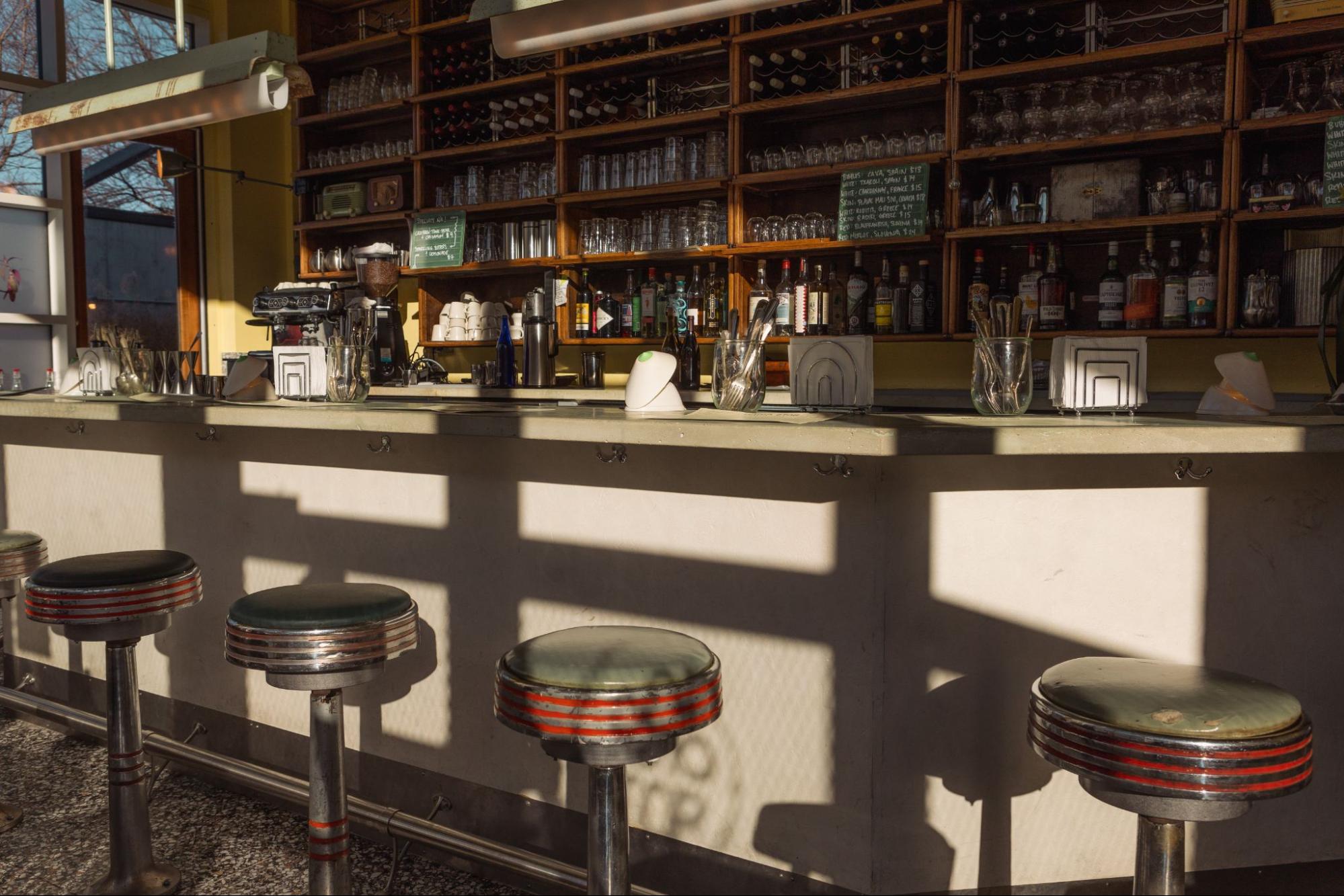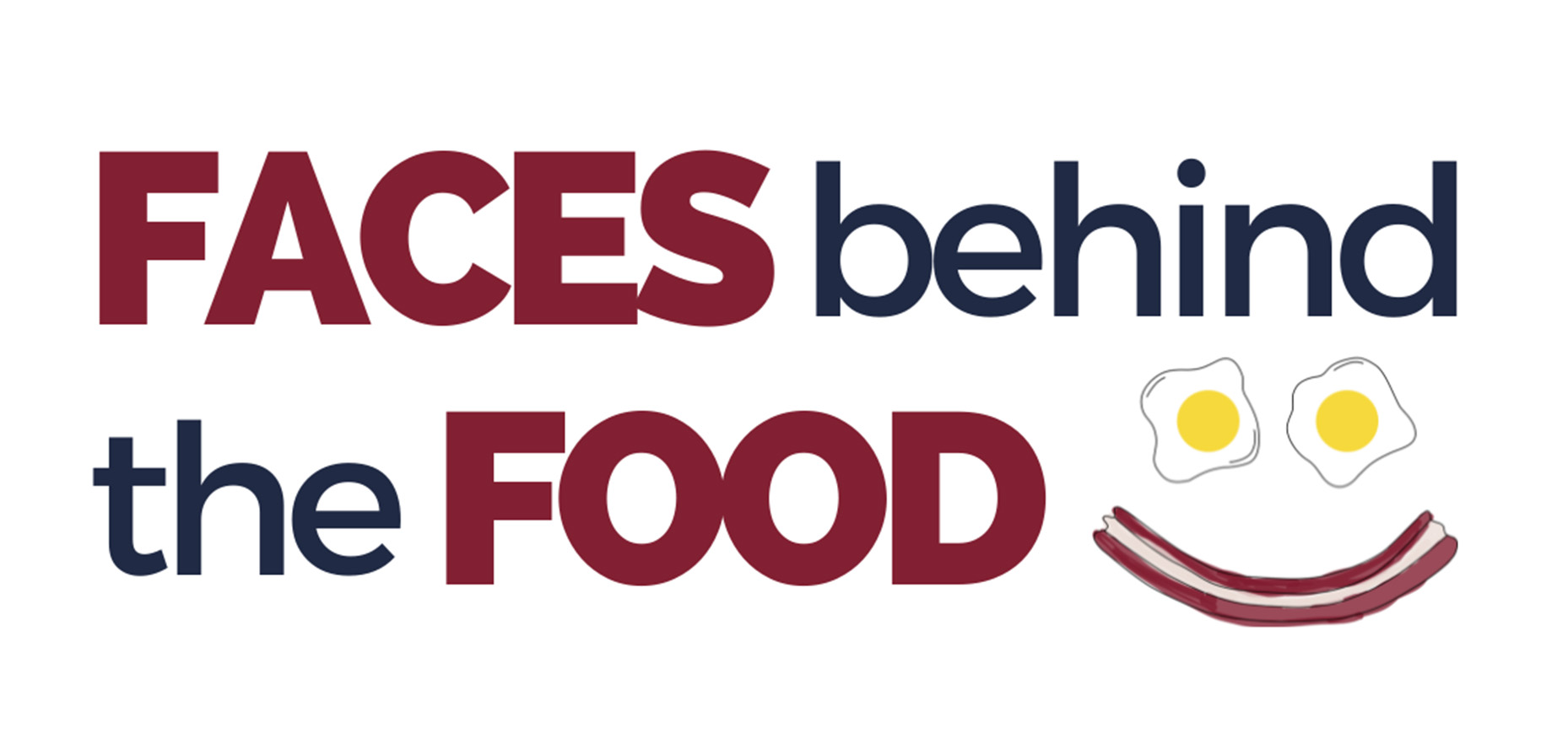Sara Conklin broadcasts Mediterranean flavors and the spirit of ’40s radio from Greenpoint

 Opened just six months ago, Radio Star is owner Sara Conklin’s newest brainchild in Brooklyn. Her first, Glasserie, lives in the former Greenpoint Glass Works building, a factory built in 1880 to meet the growing demand for glass at that time. Now, she’s brought her passion for history to the edge of Transmitter Park, where radio broadcasts were sent out in the 1940s and ‘50s to the greater NYC community. Like Glasserie, much of the design and paraphernalia of Radio Star is borrowed from the era, connecting the restaurant to its roots. But Radio Star and Conklin are not stuck in the past. Her modern approach to sustainability and pigs in a blanket — goodbye hotdog, hello merguez — make Radio Star a true 21st-century restaurant.
Opened just six months ago, Radio Star is owner Sara Conklin’s newest brainchild in Brooklyn. Her first, Glasserie, lives in the former Greenpoint Glass Works building, a factory built in 1880 to meet the growing demand for glass at that time. Now, she’s brought her passion for history to the edge of Transmitter Park, where radio broadcasts were sent out in the 1940s and ‘50s to the greater NYC community. Like Glasserie, much of the design and paraphernalia of Radio Star is borrowed from the era, connecting the restaurant to its roots. But Radio Star and Conklin are not stuck in the past. Her modern approach to sustainability and pigs in a blanket — goodbye hotdog, hello merguez — make Radio Star a true 21st-century restaurant.
Tell me about yourself and how you came to start Radio Star.
I’ve been in New York for twenty-something years. I definitely feel like I am from New York and Brooklyn in particular. Prior to that, I lived overseas in many different places for short durations. There was a bit of California thrown in there, Switzerland — places in the Middle East — Kuwait, Abu Dhabi, and Saudi Arabia. My mom is from Lebanon. I moved around mostly because of my parents’ work and schooling. I finally chose to move here and have loved it ever since, minus the grind of the lifestyle here.
I’ve always thought that moving around and my parents’ inability to cook brought us out in the world when we were traveling. I had a lot of exposure at an early age to all kinds of exciting food. It was all I knew. That opened my palate and horizons and honed an interest in eating and drinking, for better or worse.
Professionally, I began with the Cipriani group in New York in 2000. I was with them for 12 years and learned a lot about growing businesses and large-scale operations. I was Director of Operations there when I left and Facility Director at 42nd Street when I began. I had my toe in restaurants, but my focus was on the banquet side. Towards the end of my time there, I was traveling and helping them open something in LA and Abu Dhabi. It was a valuable experience for me.
Toward the end, I was itching to get out and do something smaller that was a little more my aesthetic, speed and taste. I was taking classes in wines and spirits, not really knowing where that would lead. Maybe I thought I would open a wine store or something along those lines. That morphed into starting a restaurant and led me to quit my job. About a year and a half later, we opened my first restaurant, Glasserie, and the rest is history.

Your newest venture, Radio Star, is based on the idea that the radio of the 1940s was the source of truth and transparency. Besides being the source of inspiration for the restaurant, what does transparency mean to you in the context of food?
It’s clear patrons want transparency. It’s an important part of our local community’s desires. People are not shy to say what their aversions or restrictions are. People are less shy as time goes on, in my experience. There is a lot of obscure information about what is good for us. If you look at the food pyramid and all of the changes it’s gone through, you’ll see that there are still so many issues with that. We are still evolving. The understanding of transforming farming in America, for example, is still at the very beginning. We’ve got decades, sadly, to go in fixing our agriculture in this country. In that regard, it’s very close to my heart.
Unfortunately, where I stand as the purchaser, I’m restricted to the purveyors in front of us. But there are some great ones. There are a lot of obstacles, especially since the pandemic, in dealing with distributors and all the shortcomings of our systems. Maybe in some future, where I have more time, I would dive further into that. My partner and I speak about maybe getting into a farm one day or potentially into a winery. It’s a lot of work, and I’m not sure if I have it in me.

So many restaurants in Brooklyn, especially in Greenpoint, are all about what’s new and innovative. How are you balancing the neighborhood trends with Radio Star’s retro ambiance and food?
Although we’ve taken liberties and mashed up a lot of different cultures and cuisines, there’s still something that connects them all. They all connect to an old world. The backbone of it is for the space to feel connected to the ‘40s and ‘50s. That might not be an American ‘40s and ‘50s, but there is a connection there, which you can see with things like milkshakes and even more subtle things like how dishes are plated. To me, it feels more like Portugal or Italy.
What are people ordering most often?
The merguez in a blanket is a huge seller. The pig cheeks are always a favorite. We just updated our menu and revamped our chicken croquettes, which are exceptional, with a bechamel inside. The chicken liver mousse is delicious, with foie gras whipped in. On the drink side, the Video Kills, made with fennel, gin and bergamot liqueur with a little elderflower, is super refreshing. We’re also doing really well with the Cigarettes & Coffee, which has mezcal, Scotch and cold brew with a little piece of cinnamon stick lit on fire on top. It has this amazing aromatic quality when it wafts through the room.

The sleeper favorite is our sesame-almond-oat shake. You can add a shot of espresso and a shot of booze if you’d like. It’s out of this world. It wasn’t moving super quickly at the beginning, and I was a little concerned about it, but now it’s on the rise. Every week, when I do my analysis, I’m like, “Yes, go shake!”
Radio Star is a pretty sustainable restaurant with many initiatives, including vegan menu options. Can you tell me more about its commitment to the planet?
We won’t be able to change the world single-handedly, but we are doing a little part. That manifests through composting. We also decided at the beginning — that was a little bit of a gamble but has proven to be good so far — not to invest in gas. There’s a date that New York will stop allowing that anyway, but that had not been announced at the time, though the writing was on the wall. We are a proper, fully electric line: a full hood, induction tops, griddle and fryer; all our equipment is electric. We had little experience dabbling in electric, and I found it quite difficult, while I was doing research, to figure out which equipment was best. It didn’t seem like “serious” chefs were considering electric unless there were limitations to the space. We didn’t have limitations that pushed us here. It was just a choice. So far, I’m happy, and our cooks and chefs are happy.

The question is, will this equipment hold up in the same way? That has seen a lot of evolution over the past few years and should continue to. The financial investment was not massive, but it also wasn’t small. We’re also fully reliant on the equipment that we have. We don’t have extra stuff in the back if something goes wrong. We’re learning as we go and maintaining it as we’re supposed to.
Most importantly, to the people who work in the kitchen, it’s not hot in there. If you have any experience in a commercial kitchen, you walk in and think, “Something’s off here.” It’s just a normal temperature. Working with these induction tops is so crazy. When you touch the pan to them, it turns the heat on. As soon as the pan is off, it turns itself off. I think that as New York City makes these changes we’re about to see some serious upticks in the tech around electric cooking. I’m psyched to see where it goes.
Tell me about the soundtrack to the restaurant. In a place where sound and radio are the backbone, I imagine the playlist is intentional.
We have what I like to call authorized playlists that are a mix of old and new and a bit of my taste, leaning more toward the old African, Nigerian music or reggae. Whoever is working is allowed to do their own thing. There’s a mixture of all that, but it’s key to the space. We have an awesome sound system to ensure you can soak everything in.
What is next for you and your restaurants?
The building that Glasserie is in is a complicated one. There are a lot of changes going on in this building that may or may not allow us to expand within the building. That’s something we’ve been trying to do since we arrived here. That is probably next for us if the stars align. It could be a mega-thing or a little thing. We’re not sure.
Other than that, I’m not done, that much I know.

Greenpoint
View MoreRead the Greenpoint Gazette.
Find out more about Greenpoint's history, here.
The Brooklyn Daily Eagle and brooklyneagle.com cover Brooklyn 24/7 online and five days a week in print with the motto, “All Brooklyn All the Time.” With a history dating back to 1841, the Eagle is New York City’s only daily devoted exclusively to Brooklyn.
© 2024 Everything Brooklyn Media
https://brooklyneagle.com/articles/2024/05/22/sara-conklin-broadcasts-mediterranean-flavors-from-greenpoint/
